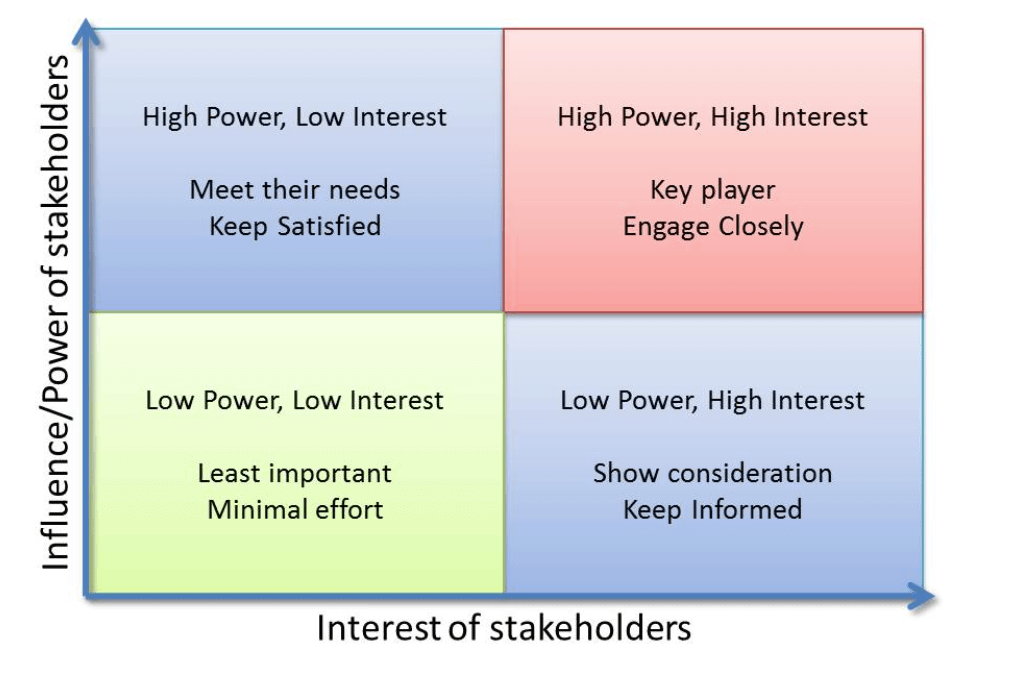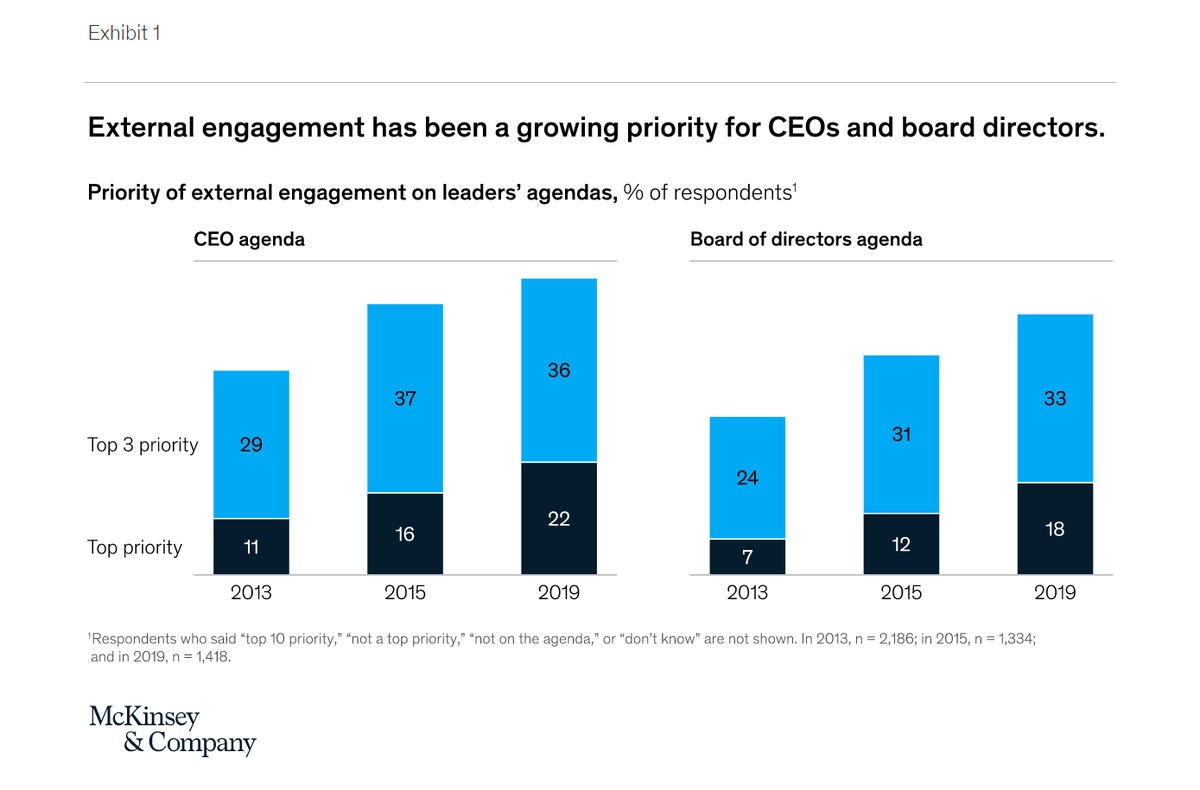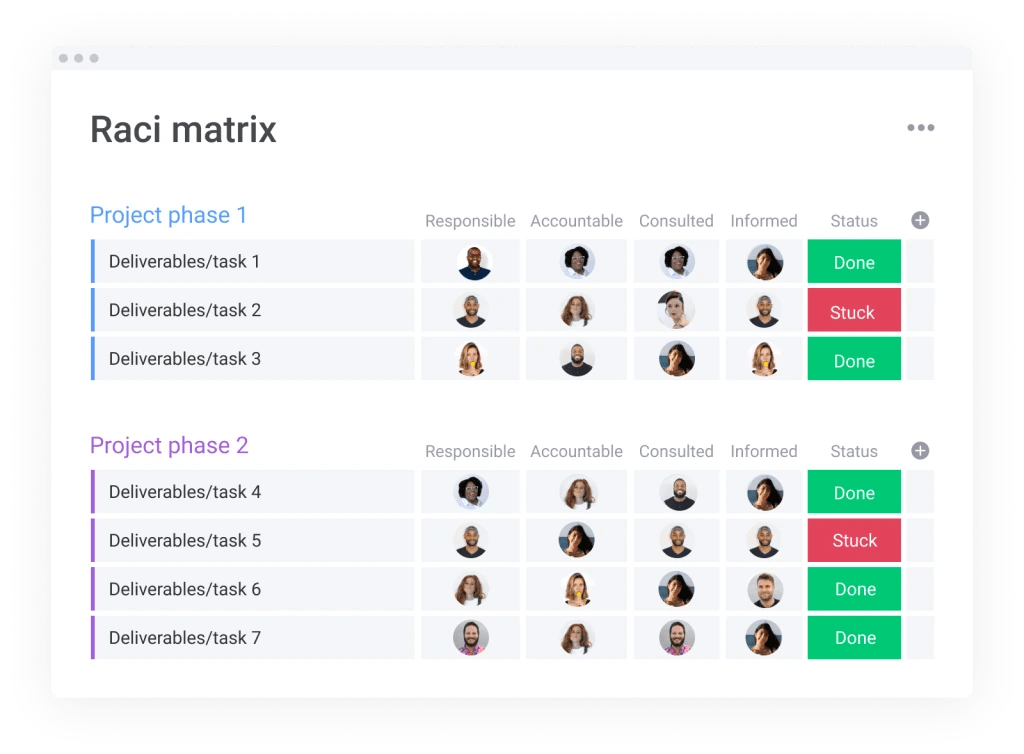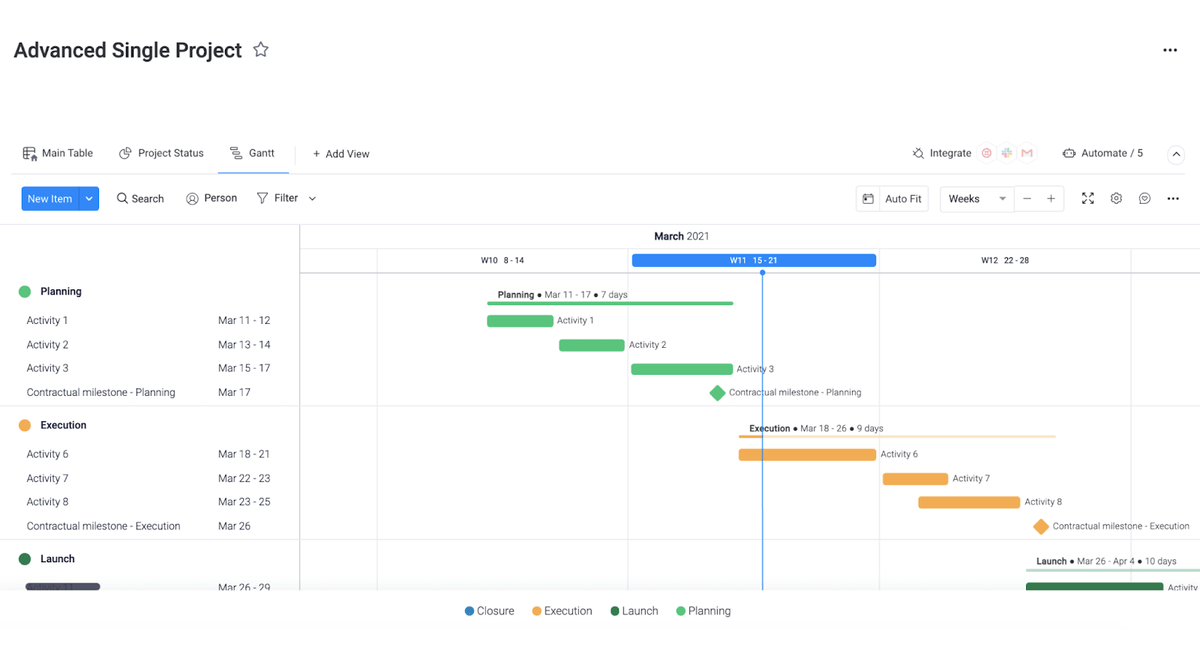Do you struggle to keep your customers or executives on board during a long project?
Stakeholder management is the process of engaging, managing, and actively communicating with stakeholders to help keep your business’ operations and projects on track.
Essentially, it’s the discipline of involving stakeholders in the process of planning and adjusting the course of a project over time.
If you’re still on the fence, know that 63% of companies already have a stakeholder engagement strategy in 2021.
In this article, we’ll cover exactly what stakeholder management is and how you can use it to improve your final product and relationships.
What is stakeholder management?
Stakeholder management is the process of figuring out who your stakeholders are and involving and communicating with them throughout a project lifecycle. It’s the discipline of keeping the most important people happy before, during, and after a project.
It all starts with figuring out who should have a say on the planning and execution of the project. Who will use the product or service? Who oversees the department responsible for the project?
Of course, how involved you should try to make a stakeholder depends on the relationship they have with your particular project.
What are the different types of stakeholders?
A stakeholder is someone who has a role in relation to a project, like a project sponsor who oversees it, a contractor supplying materials for it, a regulating body, or a customer who’ll use the product.
For each project, there could be several stakeholders, including:
- Customers
- Team members
- The project sponsor
- Executives — CEO, CFO, CIO, etc.
- Business analysts
- Business partners
- Subcontractors
- Suppliers
- Regulating bodies
- Government
- Communities
- Investors
- Creditors
- Competitors
Like the word implies, a stakeholder can be anyone who stands to gain or lose something on your project.
In stakeholder management, you often separate stakeholders into 2 categories — internal and external.
Internal stakeholders are employees and executives within your own organization. External stakeholders are business partners, external communities, and regulators.
You need to account for both types when you’re setting up your stakeholder management plan.
- How will you communicate with people outside your company?
- How will you balance their input with your executives’ feedback?
Beyond just internal and external, there are other things that separate stakeholders from each other.
Namely, how big is their stake in the project, and how much influence do they have?
What are the levels of stakeholder engagement?
If you follow the popular RACI matrix — also known as the power/interest matrix — there are 4 levels of engagement: responsible, accountable, consulted, and informed.
That’s where the name RACI comes from — it’s an acronym of the different levels of engagement.
- Responsible: the team members and managers who are working directly on the project. They’re ultimately responsible for the delivery of project milestones.
- Accountable: the accountable person is the executive or high-level manager who’ll be held accountable if the project goes wrong — or gets credit if it goes right.
- Consulted: this group of stakeholders are experts you can consult with to adjust your course of action. It could be a relevant regulatory authority or an expert in a particular field.
- Informed: these stakeholders have less direct influence over or interest in the project, and you only need to keep them informed. They could be existing customers of similar products or services or business partners.
These levels reflect the power of the stakeholder — with the CEO or direct project sponsor at the top — and how much they care about this specific project. Knowing their level of power and interest helps you decide how to treat them as stakeholders.

A CEO or chairman isn’t always the one accountable for a project just because they’re the top executive. If you’re working on overhauling your accounting practices, the CFO actually has priority.
You should still inform the CEO of all progress you make, but they likely won’t have the background to take over the rudder. That’s why considering the level of engagement is vital.
But what’s the big deal? Why should we invest time and money in how we treat our stakeholders?
Why is stakeholder management so important?
Stakeholder management isn’t just a way to please upper management and business partners. It’s a crucial part of smart project management. With customers or end-users included in the process, it’s easier to create a product or service that people like.That’s the main overarching benefit of good stakeholder management.
But we can break it down further into 3 underpinning benefits.
1. Stay on the right track and meet stakeholder expectations and needs
If you’ve ever worked on a large-scale project, you know how easy it is to veer off course. As you encounter new challenges and problems, it’s easy to settle or find what you think are new solutions.
The final result can often disappoint both customers and executives alike.
By involving sponsors, executives, and customers in the process from start to finish, you eliminate this risk.
2. Adjust to a changing marketplace
41% of projects that failed in 2021 failed because of a change in priorities. Most often, this is due to a changing marketplace.
Instead of letting projects fail completely, you can use stakeholder management to stay aligned with the market.
By involving your business partners and customers, you’re better able to navigate the ebb and flow of the marketplace.
3. Create a better final product
Ultimately, the final benefit of stakeholder management is that you can create better products.
Carefully manage input from crucial sources like potential customers, business partners, and executives. Use this feedback to deliver a product that exceeds all expectations.
The importance of external stakeholder relationships
It’s not just a talking point anymore — external stakeholder engagement is a top-3 priority for over a third of CEOs, according to a recent McKinsey survey.

The right strategy here isn’t to treat everyone the same. Even direct competitors are considered stakeholders — but you don’t want them in your secret meetings.
Instead, you need to figure out which level of interaction is appropriate, and how to reach them consistently.
When you’re crafting your stakeholder engagement plan, this should be a main consideration.
Stakeholder management strategies for better communication
Are you struggling with involving stakeholders in the right way? In this section, we outline 5 strategies you can start using today to get better results.
Start with stakeholder analysis and evaluate relationships
Stakeholder analysis — or stakeholder mapping — is the foundation of good stakeholder management.
You can’t know how you should treat each stakeholder without understanding their relationship with the project.
- How will the success or failure of the project impact them?
- Are they directly contributing to the project or accountable in any way?
- How can they change the outcome of your project?
By just asking these 3 questions, you’re already well on your way to figuring out where they stand.
From there, you can start to prioritize specific stakeholders and develop a targeted communication plan.

Create a dedicated information platform
Instead of having to manually call or message all of the minor stakeholders, you should create a dedicated information platform.
It could be a private blog, a newsletter, or a shared monday.com board that shows progress in real-time.
The shareholder letters many major companies release are actually an example of this.
Unlike quarterly reports, they’re an unregulated medium for keeping investors informed and on board. Your blog or newsletter will be like these letters in many ways. They’ll focus on the latest developments to the project without fuss.
It can also be a great way to keep major stakeholders engaged in between calls and meetings.
Use digital tools to keep track of interactions
A key to success in stakeholder management is to keep a record of all your interactions.
Managers should be able to see the last time every major stakeholder — like a project sponsor, regulator, or executive — was updated.
The easiest way to do this is to use a smart project management platform like monday.com.
Meet them where they are
Don’t try to force major stakeholders to meet you on your terms. Work with them and meet them on the channels they prefer.
If someone insists on using email, don’t try to convert them into a Slack fanatic overnight.
Send them emails — with monday.com’s Gmail integration, you can even automate this process.
Actively survey your stakeholders about project progress
Don’t only rely on meetings. Surveys are a great way to see concrete data of how all your stakeholders feel about the progress of your project.
That’s especially true for getting a sense of how minor stakeholders — like existing customers who may or may not need the new product — feel about it.
How to manage and engage stakeholders with monday.com
monday.com isn’t just a digital workspace for your team. It’s a fully customizable Work OS that includes all the features you need for effective stakeholder management.
You can easily create a custom catalog of all stakeholder relationships, keep them updated with boards and automated notifications, and much more.
Catalog all stakeholders using a RACI matrix
Start by using our RACI matrix template to outline who’s responsible and involved in different aspects of the project.
The relevant stakeholders vary, not just from project to project, but within a project as well.
The easiest way to break this down is by deliverable — for example, wireframe, design, prototype, etc.

The stakeholder engagement assessment matrix lays the foundation for how you interact with them in the future.
You can use it to create a stakeholder register where you keep information, like last contact, role, and more. On this board, you can also expand each entry with a detailed stakeholder profile.
With monday.com, you can easily customize every template to your needs, adding or removing columns, views, and more.
Share crucial project boards with stakeholders
Go beyond just sending quick email messages. Show your stakeholders how a project is going.
Project boards aren’t just useful to your project team. With the right visualization, it’s a great tool for engaging a project stakeholder.
In monday.com, you can easily create Gantt charts or timelines and share them with all stakeholders.

Visualization is a crucial part of any stakeholder management strategy. You need your stakeholders to actually grasp how your project is going.
Text alone does a very poor job of conveying that.
Actively survey and ask for feedback on new updates and direction
If you want a better overview of how everyone feels, not just the key stakeholder, surveys are a great tool.
monday.com lets you easily create forms and surveys you can use to ask stakeholders for feedback.
Just share the link in an email or message, sit back and watch the answers come in.
Use integrations to send notifications of important milestones on their channel of choice
If your stakeholders aren’t active on monday.com, you can still notify them automatically of milestones on their channel of choice.
monday.com integrates with Slack, MS Teams, Gmail, Zoom, and other channels.
Stay on track with stakeholder management
Stakeholder management and engagement are crucial elements of successful project management. They help you stay in tune with changing customer demands, regulatory requirements, and more.
Avoid costly project failures by involving stakeholders actively in the project from day one.
Why not get started with monday.com’s RACI matrix template so you can better keep track of and categorize all your stakeholder relationships?

